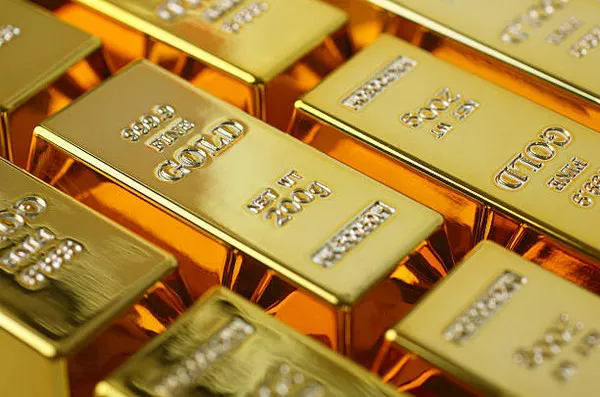In recent months, the global financial markets have witnessed a significant sell-off in gold prices, causing concern and raising questions about the precious metal’s traditional role as a safe-haven asset. Gold, often viewed as a store of value and a hedge against economic uncertainties, has experienced a notable decline in its market value. This article aims to explore and analyze the various factors contributing to the recent gold sell-off, shedding light on the intricate dynamics influencing the precious metal market.
Changing Sentiment and Risk Appetite
One of the primary drivers behind the gold sell-off is the evolving sentiment among investors and changes in risk appetite. Gold has historically thrived during times of uncertainty and market volatility, as investors seek refuge in assets perceived as safer alternatives to stocks and bonds. However, with the global economy showing signs of recovery from the impact of the COVID-19 pandemic, investors are becoming more optimistic about the future.
As economies reopen and vaccination efforts progress, the risk-on sentiment has gained traction, prompting investors to shift their focus towards riskier assets that offer higher returns. The reduced demand for safe-haven assets like gold in such an environment has contributed to the downward pressure on its prices.
Rising Interest Rates
Another crucial factor influencing the gold sell-off is the shift in interest rate expectations. Gold, being a non-interest-bearing asset, tends to struggle when interest rates rise. As central banks signal a potential tightening of monetary policy to control inflation, the opportunity cost of holding gold increases. Investors may opt for interest-bearing assets like bonds instead, leading to a decrease in demand for gold.
The U.S. Federal Reserve’s stance on interest rates often has a significant impact on gold prices. Any indication of a more hawkish monetary policy, with potential rate hikes, can trigger a sell-off in gold as investors reevaluate their portfolios in response to changing yield dynamics.
Strengthening U.S. Dollar
The relationship between gold prices and the U.S. dollar is well-established, and a stronger dollar can contribute to a decline in gold prices. The U.S. dollar and gold often exhibit an inverse correlation, meaning that as the dollar strengthens, gold prices tend to weaken.
In recent months, the U.S. dollar has appreciated against other major currencies, driven by factors such as robust economic data, expectations of higher interest rates, and the perception of the U.S. as a relatively attractive investment destination. This strengthened dollar has put additional pressure on gold prices, making the precious metal less attractive to international investors.
Liquidation Pressures and Margin Calls
Financial markets are not immune to sudden shocks and corrections, and when they occur, investors may face margin calls, triggering a wave of liquidation. During periods of market stress, investors may need to sell assets, including gold, to meet margin requirements or cover losses in other parts of their portfolios.
The recent sell-off in gold can be partially attributed to such liquidation pressures, as investors reassess their risk exposure and respond to market fluctuations. This phenomenon is not unique to gold but reflects broader market dynamics that can impact various asset classes.
Bitcoin and Cryptocurrency Competition
The rise of cryptocurrencies, particularly Bitcoin, has introduced a new dimension of competition for traditional safe-haven assets like gold. Some investors view Bitcoin as “digital gold” and a modern alternative store of value. The increasing popularity of cryptocurrencies as speculative investments has diverted attention and capital away from traditional safe-haven assets, including gold.
The decentralized and technology-driven nature of cryptocurrencies appeals to a younger generation of investors who may perceive digital assets as more in tune with the evolving financial landscape. This shift in preference can contribute to a reduction in demand for gold, especially among investors seeking alternative hedges against economic uncertainties.
See Also Where Can I Get Cash for Gold Near Me?
Conclusion
The recent sell-off in gold prices is a complex interplay of various factors, including changing investor sentiment, expectations of rising interest rates, a stronger U.S. dollar, liquidation pressures, and competition from cryptocurrencies. While gold has a long-standing reputation as a safe-haven asset, its performance is influenced by the ever-changing dynamics of global financial markets.
Investors should remain vigilant and adapt their strategies to navigate the evolving landscape. The future trajectory of gold prices will likely depend on how these influencing factors continue to unfold and interact in the coming months. As economic conditions evolve, market participants should closely monitor developments and assess the implications for their investment portfolios.


